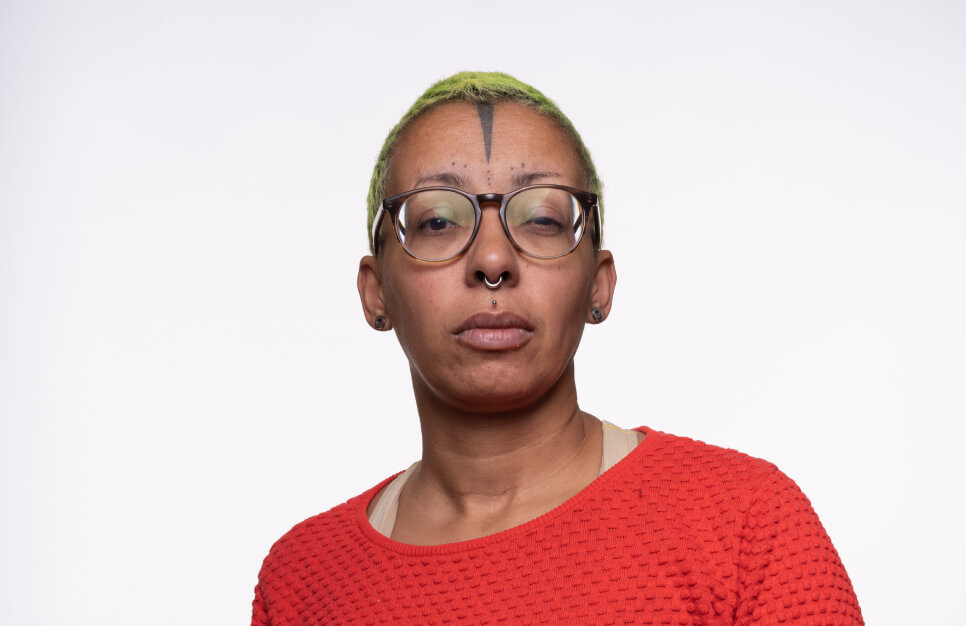Welcome to the process!
A human is never made up of just one layer. They are never simply a portrayal of what we see or think we see. Our identity, who we are, is made up of different layers, different pieces and fragments of the things we like, the things we are, the things we identify with.
A process of finding
Finding these fragments and putting them together into a whole is a process of searching for what makes us who we are. Sometimes, the pieces don't seem to fit together. Either they are not the right parts, or they are parts we have just discovered and need to learn more about. This identity process is sometimes a long and painful process - not only, but especially, for people who are marginalized in our society. People who do not conform to a socially conceived norm have identity fragments imposed upon them from the outside, through presumptions and prejudices - but they are usually wrong ones. - Some feel bulky, some too dominant, some simply disturbing and some wrong. Often, a lot of time passes until an image that is created from one's own self-determined fragments found within feels coherent. Until then, people often feel incomplete or wrongly put together.
But such a finding process is not only painful and lengthy. It is also important. Exploring oneself, taking oneself apart, looking at the individual parts and recognizing their togetherness, their interconnectedness, their intersectionality, can be equally healing as it can be painful. When the fragments join together and connect with each other, the whole picture becomes coherent. It depicts the self. One's own identity.



Collages - a whole emerges from fragments
The form of collage symbolizes this process and the complexity of the depiction of an identity. To create a collage, various elements are pasted onto a supporting surface, they are joined togehter and arranged in relation to each other, thus creating a new whole. Photomontage is a special collage of photographs. It is often used to express political dissent or resistance, for example in Dadaism as a protest against the First World War, as well as the fight against fascism, police violence and social injustices.
The people who become visible through Pain Pride Pose embarked on an inner and outer collage work. They dealt with different aspects of their personalities, created collages in several workshops and were free to decide which elements to use, and how to use them.
I drew my inspiration for the photo collages from these collages, from the texts that were created in further workshops, and from my personal encounters with the participants. The joint creative process with the participants was immensely important. The social experience of Black people, Indigenous people and People of Color as well as refugees or migrants in is far too often as follows: They don't tell their own stories. They are told for them, usually in a distorted, reduced or simply in a false manner. The narration and depiction of identities in this exhibition are those of the participants themselves. Through words, fragments and photographs, they have become visible.


The white room
The photographs were taken in a white room. A white chair, a white table, a white background. The room can represent anything: German society, the family, the circle of friends, the workplace, the queer community, the home. In this reduced environment , the participants could search for, and find, their own space and their positioning within it They asked themselves "Which space is relevant for me right now?", "How do I feel in this space?", "How can I express and represent this feeling?" If a person feels welcome and present in a space, she can stand, for example, in the middle. If she is not present or does not feel welcome, perhaps her back is visible, or only one hand, only one leg, or another physical fragment.

Photographer Nora Hase
Nora Hase learned her love for photography through her grandfather, but rediscovered it for herself completely during her studies. During this time she developed a special fascination for staged portrait photography. Recurring themes in her photography are diversity, inclusion and representation. The queer Black artist lives and works in Cologne.

The exhibits
The people who present themselves in Pain Pride Pose were portrayed by myself and at the same time, portrayed themselves in their pain, in their pride, in self-chosen poses. The exchange and consultation with the individual participants was very fruitful and important for the development of the final photo collages. At the same time, it was a balancing act to deal with the opinions and wishes of 15 participants and three team members while giving space to my artistic expression. I am grateful for this challenging, creative and complex process, with all these people in all their fragments.
Now they are visible. And I am excited to see what reactions their visibility will evoke. I wish all people who visit the exhibition and look at this website to ask themselves how they do it. It is crucial with which intention we look at ourselves. What are we looking for?
- Nora Hase

